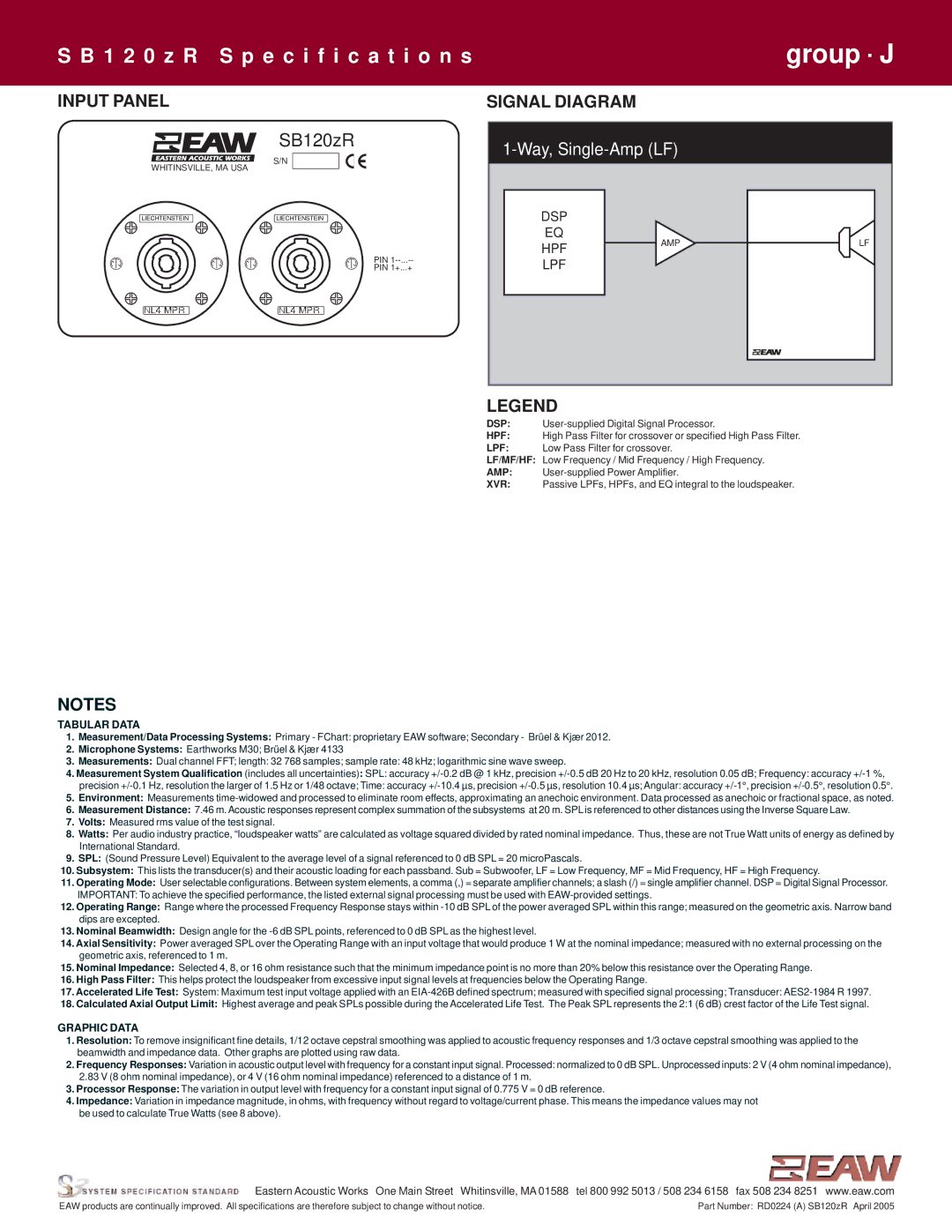SB120zR specifications
The EAW SB120zR is a powerful subwoofer designed specifically for professional audio applications, providing high-impact performance and reliability for a variety of music genres and sound reinforcement environments. This subwoofer is a part of EAW's acclaimed series, known for its innovative design and cutting-edge technologies that cater to the needs of sound engineers and musicians alike.One of the standout features of the SB120zR is its dual 12-inch high-excursion woofers, which deliver deep and punchy bass response. The woofers are crafted from high-quality materials to ensure longevity and performance consistency. The enclosure design is optimized for low-frequency extension, allowing the subwoofer to reproduce clear and powerful low-end frequencies that are crucial for contemporary music, including EDM, hip-hop, and rock.
The SB120zR utilizes advanced amplification and DSP technology, incorporating an onboard digital signal processor that precisely manages the frequency response and ensures optimal sound quality. This technology allows for customizable EQ settings, enabling users to tailor the sound to suit different environments and applications. The intelligent amplification system maximizes power efficiency, delivering outstanding performance without excessive heat generation.
In terms of connectivity, the SB120zR comes equipped with multiple input options, including XLR and speakON connectors, making it versatile for a variety of setups. Its lightweight construction combined with a robust design ensures ease of transportation and installation, making it suitable for touring musicians as well as fixed installations in venues, clubs, or auditoriums.
Another notable characteristic of the SB120zR is its durability. The cabinet is built from high-quality plywood and finished with a rugged paint, ensuring resistance against wear and tear during gigs. Additionally, the subwoofer features a deep, recessed carry handle and integrated mounting points for easy stacking or rigging with other EAW loudspeakers.
Overall, the EAW SB120zR offers a blend of performance, versatility, and reliability, making it an exceptional choice for professionals seeking a capable subwoofer to enhance their sound systems. Its impressive specifications and feature set stand out in the competitive landscape of professional audio equipment, making it a valuable addition to any audio setup.

